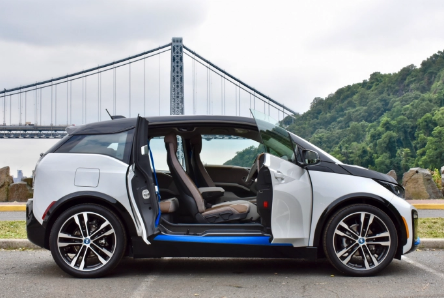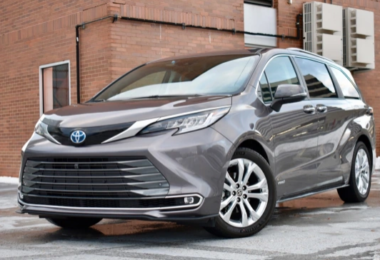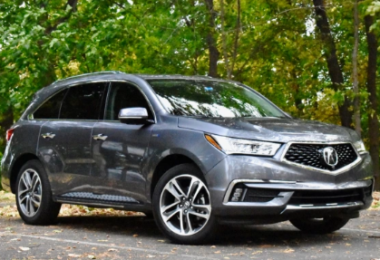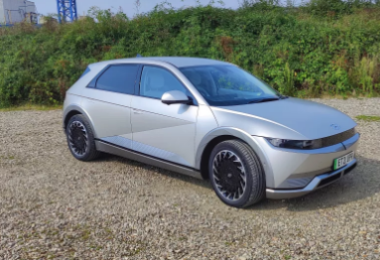We’re on a rooftop in New York City in May 2014. BMW just introduced the i3, a ground-breaking new electric vehicle. The i3 isn’t just any car, according to executives; it’s a reimagining of what a BMW can be. It’s a high-end vehicle created for a time when cities are crowded and people are more concerned of the environment. Nothing else that BMW has ever produced looks like that.
The i3 is no longer a glimpse into the future as we move forward to the present. The diminutive BMW has been in production for some time, through numerous upgrades, and witnessed a surge of new electric vehicles at both ends of the market. Therefore, this is the ideal time to review BMW’s moonshot.
In particular, we took a 2019 BMW i3s. The i3s is the model that is most fitted to live up to BMW’s oft-quoted moniker, “The Ultimate Driving Machine,” thanks to additional power and sportier chassis tuning. Our test car was priced like a typical BMW, with a base price of $48,645 and an as-tested price of $54,595 (all prices include a required destination fee). But is it truly deserving of the blue and white pin?
Innovative design
Even when designers start from scratch, the finished cars frequently resemble earlier models. With the BMW i3, that is not the case. BMW went beyond simply attempting to produce an electrified version of an existing car model. In order to create the ideal city car, its designers completely rethought every aspect.
Part SUV, part Smart car, that’s how the i3 looks. The absence of a protruding hood and of front and rear overhangs allows the BMW to maximize interior space while maintaining a compact exterior size. It is wider and taller than the ordinary tiny car, and the driver sits higher up for a commanding perspective of the road. Even five years after its introduction, this car still has a unique appearance despite the fact that everything was done for practicality. Even the wheels are out of the ordinary; they have a great diameter but are incredibly thin, resembling gigantic bicycle tires. By doing so, the frontal area of the car is decreased, improving its aerodynamics.
That unconventional thought goes beyond the surface. The i3’s body shell is built of carbon-fiber reinforced plastic, just like the BMW i8 sports vehicle (you can even see it when you open the doors). Although carbon fiber is strong and lightweight, it is also incredibly expensive and challenging to deal with. Because of this, the material is mainly used in race cars and exotic supercars. BMW’s method of fusing carbon fiber with plastic preserves the material’s advantages while also making it less expensive and simpler to mass produce. Additionally, the rear-mounted electric motor and suspension of the i3 are supported by aluminum subframes.
The i3 may have a futuristic design, but its technology is already dated.
The interior of the i3 is also out of the ordinary. BMW believed that an electric vehicle should be constructed using environmentally friendly materials, thus it used kenaf, a substance made from plants, recycled plastics, and open-pored, unbleached eucalyptus for the wood trim (which has the advantage of looking like real wood as well). Your eco-friendliness will never be in question according to BMW’s assertion that over 80% of the materials visible to car occupants are made from recycled or renewable materials. The cabin of our test car, in stark contrast to some modern BMW interiors, seemed bright and pleasant with its Ikea color scheme and (optional) bright blue seat belts.
But not everything of the decor was appealing to us. The position of the driver’s seat is so far back (perhaps for weight distribution) that you feel as though you are in the center of the vehicle. BMW attempted to bridge the gap with rear half doors, analogous to an extended-cab pickup truck, rather than shrinking the i3 to fit four full-size doors, which would have saved room. The back seats, however, are still rather small and only truly appropriate for sporadic use.
Because the electric motor is located directly underneath it, the cargo area is also quite limited. In addition to being more affordable than vehicles like the Nissan Leaf and Chevrolet Bolt EV, a Tesla Model 3 provides more room for passengers and goods.
Outdated technology
The i3 may have a futuristic appearance, but its technology is already dated. The fact that the i3 has become obsolete after only a few years on the market is evidence of how quickly technological features are being developed and adopted.
You are correct to point out that BMW eliminated gauges in favor of displays before Tesla did. Of course, the i3 has two screens as opposed to the Tesla Model 3’s lone, large screen. The driver’s front-facing screen displays important data including speed, while the second screen controls infotainment features. Although it isn’t as simple as Tesla’s one-screen system, it functions better in several respects. It preserves the information in the driver’s line of sight and makes it easier to understand by dispersing it across two screens. Additionally, the iDrive control knob and analog menu shortcut buttons from BMW are included, making it simple to navigate.
Just too bad BMW couldn’t come up with something worthwhile to display on those screens. Although the i3 is marketed as a luxury vehicle, its infotainment functions are somewhat rudimentary. Nothing that you wouldn’t find in a less expensive automobile is included. Only Apple CarPlay is offered, not Android Auto, and only for a year is it free to use. BMW does provide wireless phone charging, but the clip it uses to hold the phone—a Moto G7—would not fit ours, even with the case on.
The same is true of driving assistance. BMW only offers more basic adaptive cruise control, and even that is an add-on. In contrast, the Tesla Model 3 is available with Autopilot, and the Nissan Leaf has ProPilot Assist.
The driving experience was undoubtedly enjoyable despite the disappointing electronics.
After parallel driving a Nissan Leaf and an i3s, we realized that we were missing one of the Nissan’s other features: a 360-degree camera system. The Leaf offers the system as an add-on extra, whereas BMW does not, regardless of pricing. The only things you get are parking sensors and a rearview camera. Though you’d think that would be enough for a vehicle of size, the i3’s unusual seating arrangement can make parking challenging.
We were seated so far back that it was difficult to discern where the front of the car ended, and we wished there had been a forward-facing camera. BMW does have a park-assist system that can maneuver the vehicle into a space automatically, but it is only offered on the ordinary i3, not the i3s. But that is unimportant at this moment. Parking issues should not arise at all with a vehicle made for city use.
Hot electric hatchback
The driving experience was undoubtedly enjoyable despite the disappointing electronics. BMW has developed the first real all-electric hot hatchback with the i3s. The i3 was always going to be a fun car thanks to its rear-wheel drive system and lightweight design. Some of its potential is unlocked by the i3s model.
Power is where the i3 and i3s diverge the most. The i3s produces 184 horsepower and 199 pound-feet of torque, compared to the normal model’s 170 horsepower and 184 pound-feet. The i3s, according to BMW, can accelerate from 0 to 60 mph in 6.8 seconds as opposed to 7.2 seconds for the ordinary i3. The maximum speed increases from 93 to 99 mph. Even if those stats are better than the i3’s normal performance, they still fall short of the competition.
Chevy claims that the Bolt EV will go from 0 to 60 mph in 6.5 seconds, while the top speed is not specified. You can also purchase a Tesla Model 3 Standard Range Plus for a lot less money than an i3s, which, according to Tesla, can accelerate from zero to 60 mph in 5.3 seconds and have a top speed of 140 mph.
But you don’t have to move quickly to enjoy yourself. In traffic, the i3s felt swift enough, accelerating away from stoplights as though being pursued by death itself. That is the beauty of electric torque that is always available, and BMW has fully embraced it. The i3s was nevertheless quite speedy, despite the fact that some vehicles may be faster.
The i3s is a vehicle that is ahead of its time, but by looking so far into the future, BMW has forgotten what customers want now.
The i3s is a riot in corners as well. Its tiny size, low weight, and responsive handling are a wonderful mix. Also apparent is the rear-wheel drive. It gives the car precisely the proper amount of rotation to aid in cornering. The quick torque of the electric motor may be fully utilized by the driver thanks to this chassis. You can also take advantage of this package at reasonable speeds.
A driver-selectable sport mode and a sportier suspension setting than the basic model were also provided by BMW for the i3s. Although the handling is noticeably sharpened, the ride quality suffers somewhat as a result. The initial “comfort” setting isn’t all that great. No matter what drive mode is used, the ride is rough and the suspension sends every flaw in the road to the driver’s spine.
The useful information
The i3’s range ratings demonstrate how dated its technology is. The EPA estimates the 2019 i3’s range to be 153 miles. That’s a significant improvement over the 81-mile rating from the vehicle’s introduction in 2014, although many electric vehicles already have ranges of more than 200 miles. A type with a small gasoline engine that serves as a backup generator is available from BMW. The combined range for that model, using both gasoline and electricity, is 200 miles. The BMW 330e is a full-fat plug-in hybrid, but if you’re going to buy an electric vehicle that requires gasoline, you might as well.
According to BMW, it takes 4.9 hours to fully charge the 42.2 kilowatt-hour lithium-ion battery pack from a 240 volt Level 2 AC outlet. According to BMW, the i3s is also capable of 50-kilowatt DC fast charging, which enables an 80 percent charge in 42 minutes (the Germans are nothing if not precise). The Combined Charging Standard (CCS), which is preferred by other European automakers, is used by BMW. The accessibility of CCS stations varies significantly by region, as it does with any public charging.
The i3s receives a four-year/50,000-mile new car warranty, free roadside assistance for four years, and the same new car warranty as other BMW models. Additionally, the battery pack comes with a 10-year, 100,000-mile warranty. Consumer Reports gave the ordinary i3 an above-average reliability rating, which is probably applicable to the i3s as well.
Because there is no structural difference between the normal i3 and the i3s, crash-test ratings likewise apply to both models. The Insurance Institute for Highway Safety (IIHS) gave the i3 its highest possible “good” rating for all crash tests, but a “average” rating for the seats and head restraints, as well as a middle-of-the-road “advanced” rating for front collision prevention. There are no current rankings for the i3 available from the National Highway Traffic Safety Administration (NHTSA).
How DT would set up this vehicle
The saying “in for a penny, in for a pound” applies here. The i3 is a bad bargain at its base price of $45,445 due to its short range and lack of amenities, but we would still spend an additional $3,200 to buy an i3s. The i3s is, in our opinion, worth it because of the added power and suspension modifications. The optional Tech + Driving Assist package, which costs $2,350 and includes adaptive cruise control, GPS, and LED headlights that follow the curve of the road, is another something we would recommend. However, we wouldn’t get the range extender. It doesn’t provide enough of a range extension to justify its additional expense or the trade-off of relying partially on a gasoline engine.
Summary
The BMW i3s is a vehicle that is ahead of its time, much like the 1934 Chrysler Airflow and the 1948 Tucker. The i3s includes some innovations that the auto industry ought to adopt more frequently, such its carbon-fiber reinforced plastic body. But BMW has lost sight of what today’s purchasers need by looking so far into the future. That has left the i3s in a dangerous situation. Better all-around vehicles include the base models of the Tesla Model 3, Nissan Leaf, and Chevrolet Bolt EV, all of which are considerably less expensive than the BMW. The i3s doesn’t, however, provide enough performance or technological features to make trading down from a Tesla Model S, Jaguar I-Pace, or Audi E-Tron worthwhile. For around the same price as our i3s tester, you could also get a very beautiful BMW 3 Series if you aren’t entirely committed to becoming electric.
Do you need one?
No. The 2019 BMW i3s has a bold look and is a lot of fun to drive, but it is not a good value due to its high price and limited range.
You can also check Silicon Valley From 2014 to 2019 In Details







